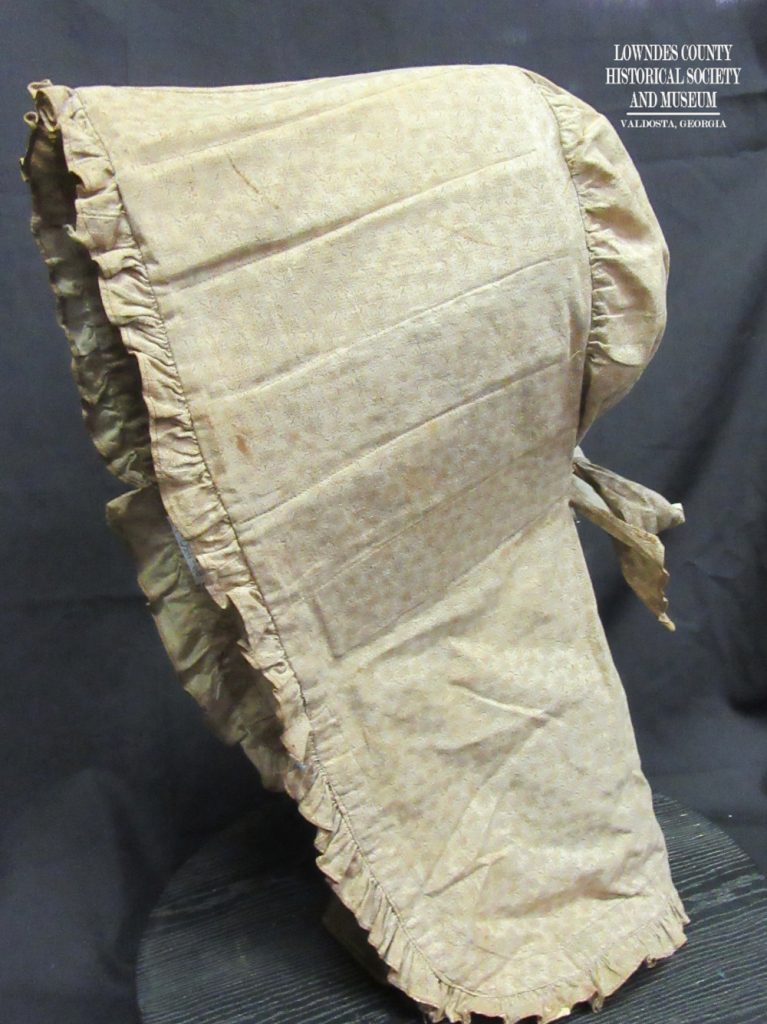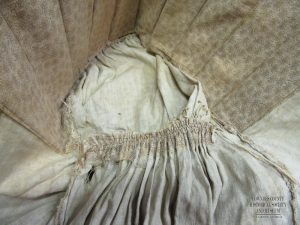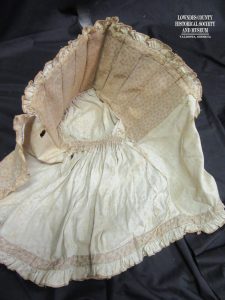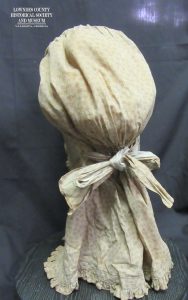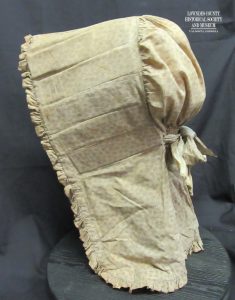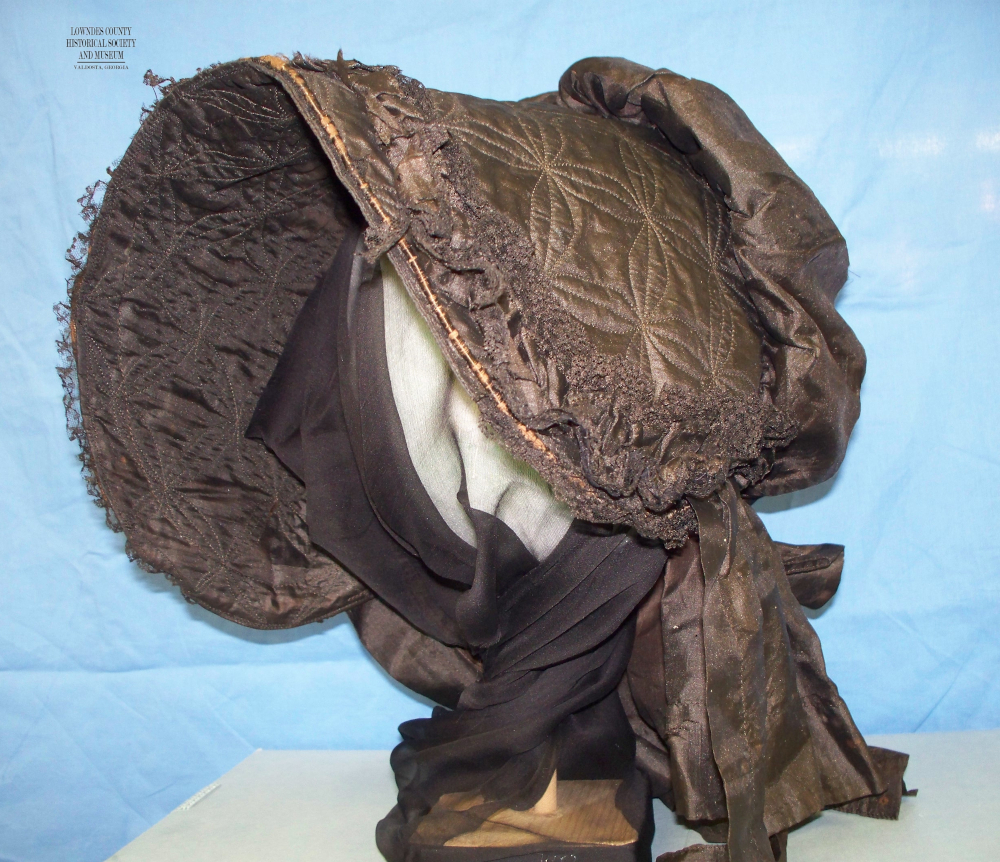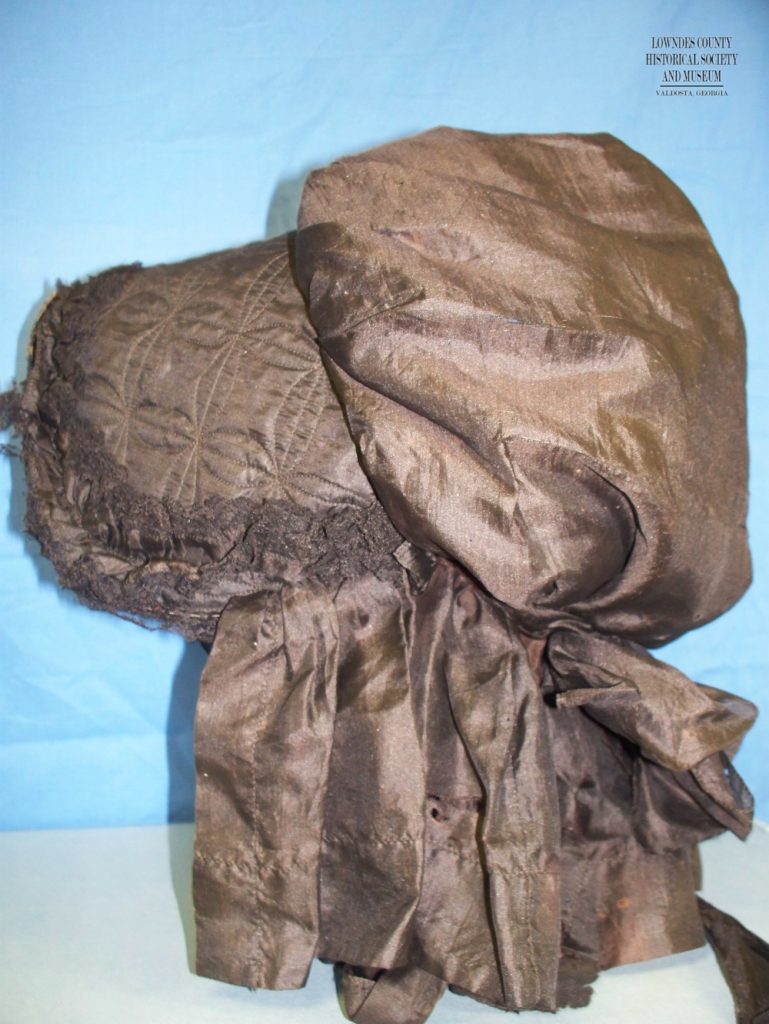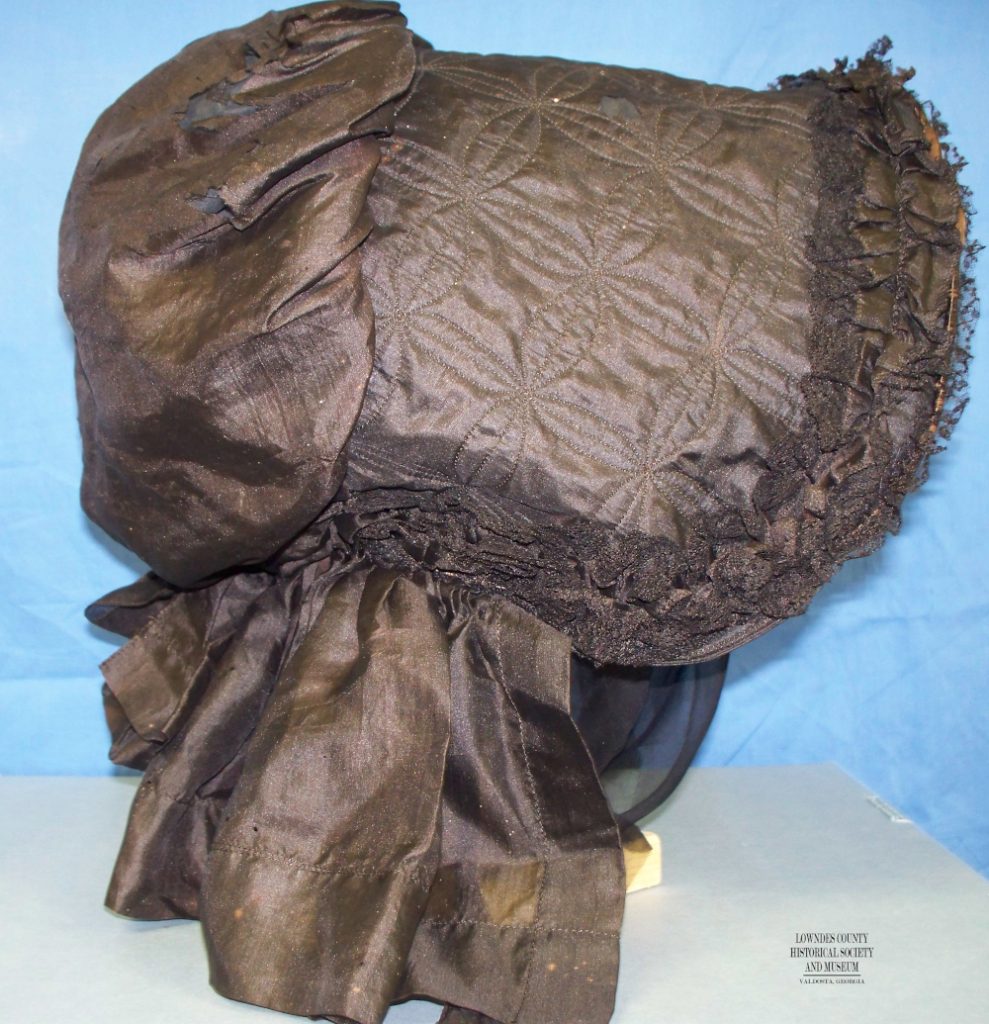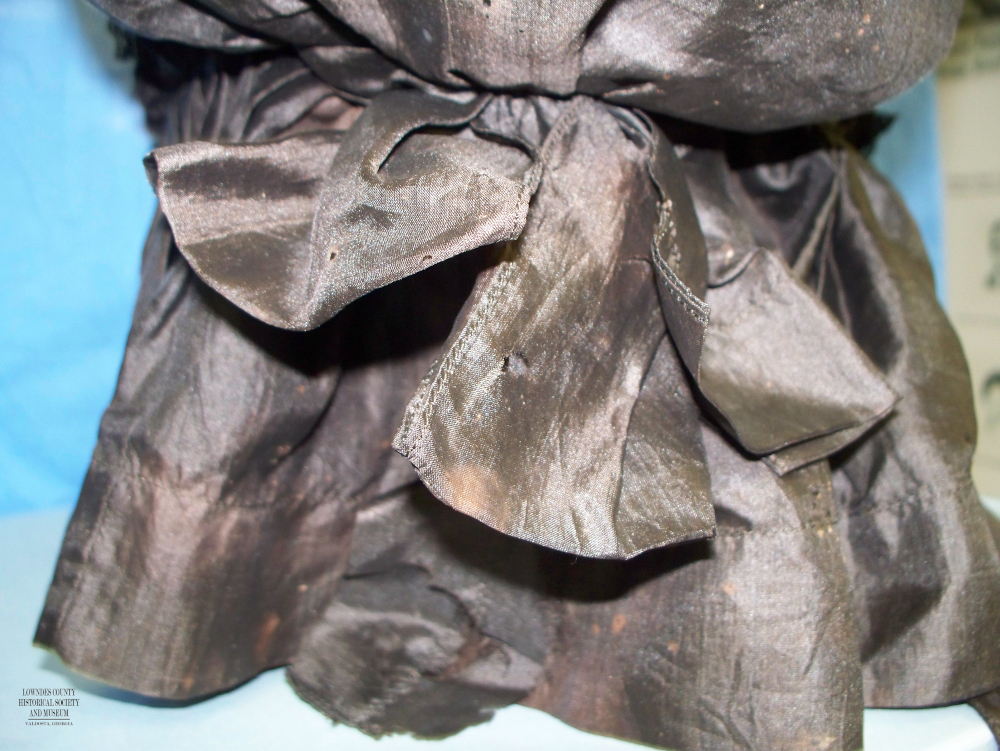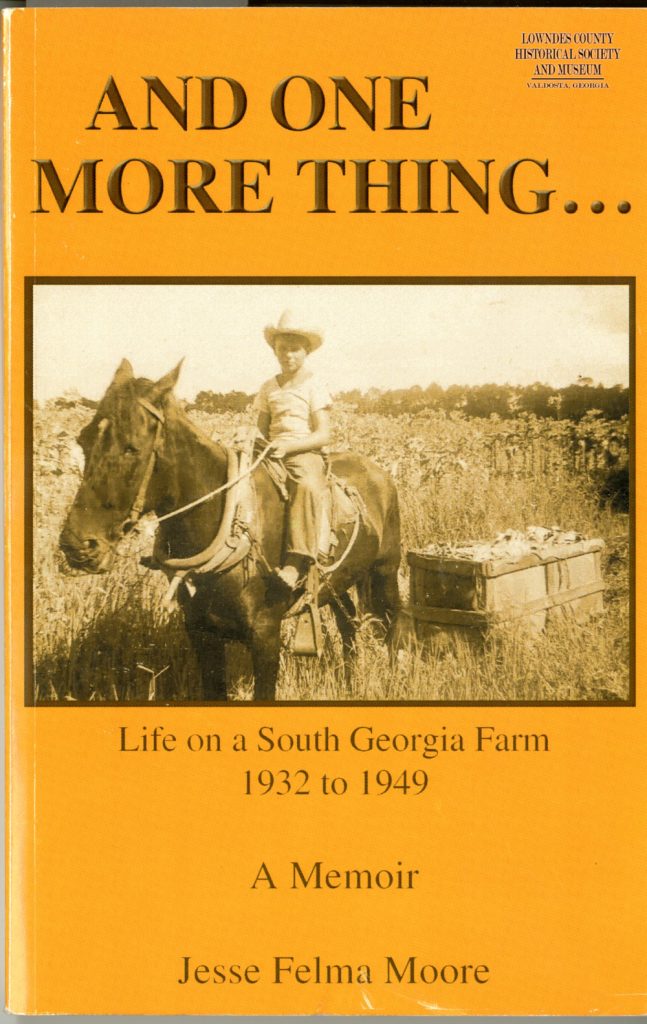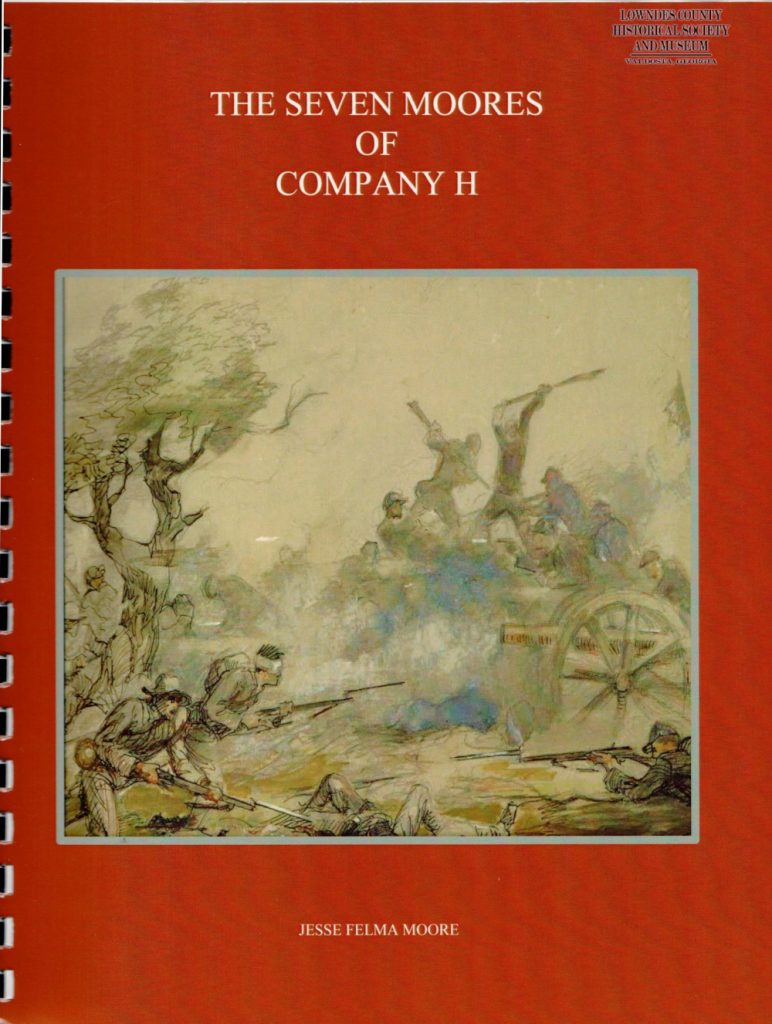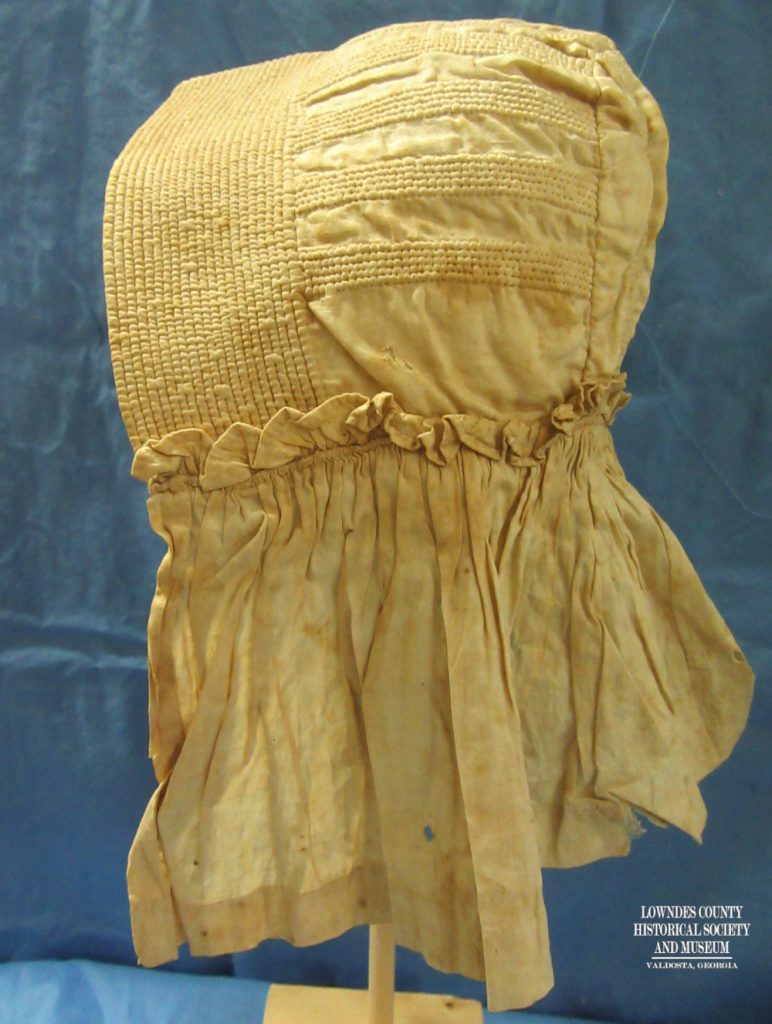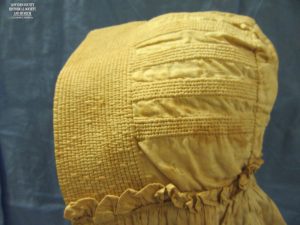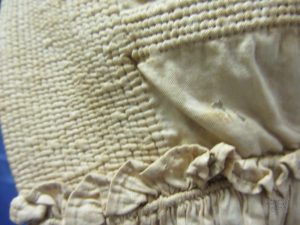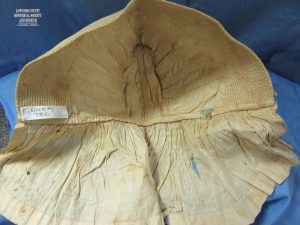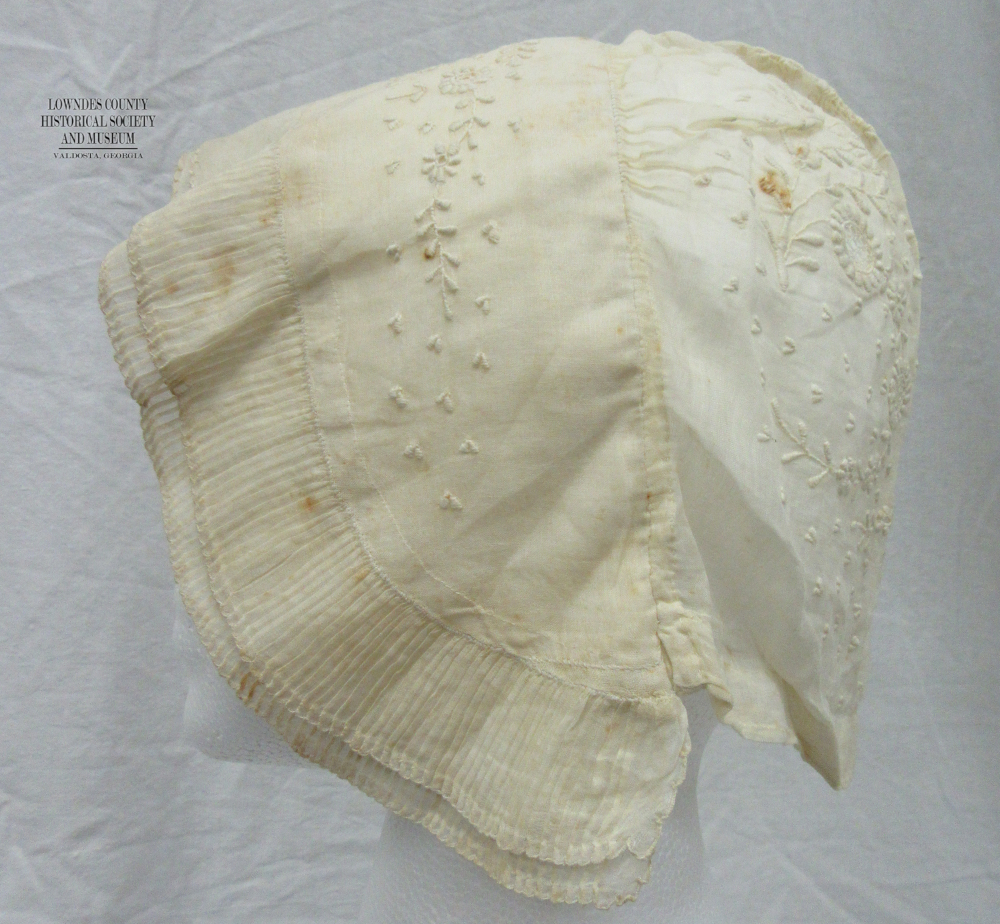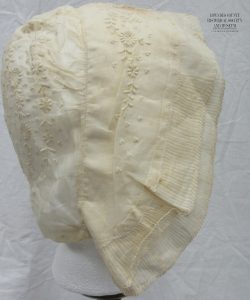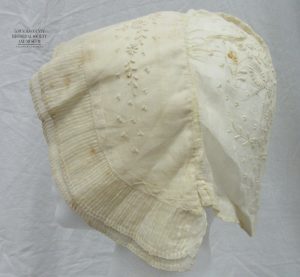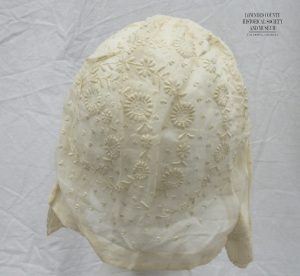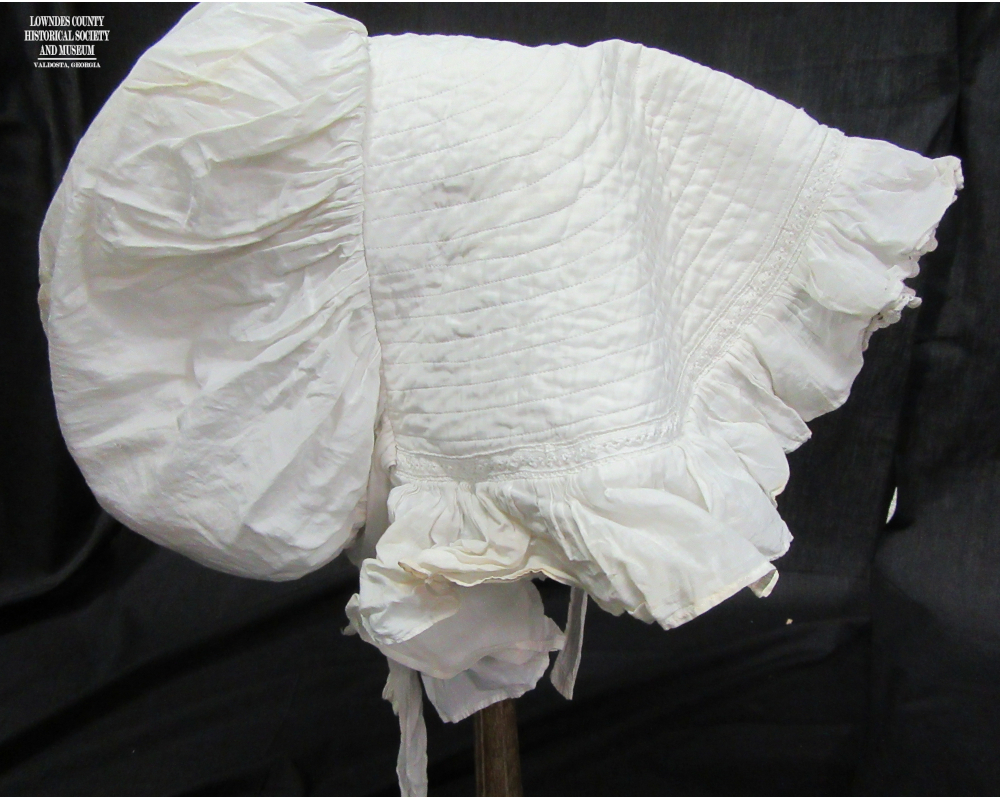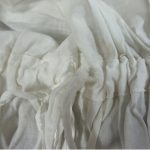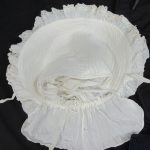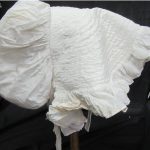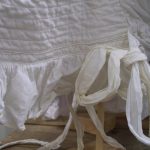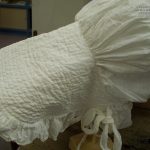Adult and children bonnets which are part of the Lowndes County Historical Museum Collection are shown on this page. However, there is more children’s clothing shown on the museum’s web page. Christening, long dresses, and long slips is yet another and separate children’s page due to the large volume of information on this page also.
Slat Bonnet, What story does it tell?
Ralph Johnson family 84-430-1 TB58
This bonnet belonged to Ralph Johnson’s family with the information passed down from family that it belonged to his grandmother, Sarah “Sallie” Ann Robinson Summers ” who wore it in 1813 Fort Mims Massacre in Jackson, Alabama.” Ralph Johnson was born in Alabama but lived in Valdosta, Georgia most of his life. His parents were Noel B. Johnson (1877-12 Sept 1963) and Tululah Tompkins Johnson (1Oct, 1889- Mar 1984). Tululah’s mother, Ralph Johnson’s Grandmother, was Susan M. Summers Thompkins b. 26 Nov 1856 d. 20 Mar 1943 who married James Archibald Thompkins b. 11 June 1852 d. 10 Mar 1923. They were married 23 Dec 1875 in Clark Alabama.
However Susan’s parents were Sarah “Sallie” Ann Robinson Summers b. 1823 d. 9 Dec 1890. and Whitfield Brooks Summers 6 Feb 1816 d. 21 Oct 1897 and were the Great Grandparents of our donor. According to the family knowledge it was thought the bonnet belonged to this Sarah Ann Robinson Summers and probably did. However, the massacre occurred in 1813 and Sarah Ann Robinson Summers was not born until 1823. She could not have worn this in the massacre. So where did the story of surviving the massacre come from?
Further checking revealed that Sarah Ann Robinsons parents were Axey Pugh and Amos Robinson. Axey Pugh (Achsah Axaetha) (1797-1874), the mother of Sarah Ann Robinson Summers first married Amos Robinson on 9 May 1814 in Clark County Alabama, about 8 months after the massacre. She was 16 years old. There is no hard evidence that Axey Pugh was there at Fort Mims during the massacre but because of the nature of the event, the list of those who died or survived is incomplete. There was a list of surnames of casualties and among them was the name Robinson. So the family member who survived the massacre could have been someone in Axey’s husband’s family, Amos Robinson (though they were not married yet).
A second possibility comes from Axey’s parents Ruth and Elijah Pugh of Clark County, Alabama. He was a revolutionary solider and she ran messages across the battlefied. After the war they settled in Grove Hill, Choctaw Purchase and served as an officer until retirement in 1818 according to Mark Morrow Find a Grave.com. This would put him in the general vacinity of the massacre with his daughter living with him in the household.
Upon examination of the bonnet it was found to be made with a straight stitch sewing machine and has card board inserts in the slats and the seams were left raw. This gives the indication that the bonnet was made later than the massacre but could have been worn by Sarah Ann Robinson Summers as the family lore stated.
Conclusion of research is that the bonnet might have been worn by Sarah Ann Robinson Summers and that her mother Axey Pugh may have been at the fort or someone in Sarah Ann’s husbands family may have seen the massacre of Aug 30, 1813 at Fort Mims. A second possibility might be that the family meant Sarah Ann’s Grandparents Ruth and Elijah Pugh were living in the Choctaw Purchase area during the time of the massacre.
For more information on Ralph Johnson please see Schools/ Band (a page coming in the future.)
1860’s Silk Bonnet Kathryn Stevens Collection2013-36-03 TB 58
This bonnet tells of a family history and timeline of Lowndes County, Georgia during the Civil War. According to Kathryn Stevens, this bonnet belonged to an ancestor Matilda Shaw Moore born to Jeremiah and Rachel Shaw in 1840.She married Jessie Moore at the age of 17 in 1857. Jessie along with his other brothers fought in the Civil War. Jessie returned home after the war to work the farmland his father had given him. Jessie and Mitilda Moore had 10 children. Jessie died in 1925 and Mitilda in 1913 and are buried at Cat Creek Cemetery.
The Moore and Shaw families of Lowndes County, Georgia are well documented including several books written by Jessie Felma Moore. – One More Thing: Life on a South Georgia Farm 1932 to 1949 includes family history and photos of the original homestead in Lowndes County while The Seven Moores of Company H traces these brothers (including Jesse’s) through thier war days. A display One family During the Civil War is on display at this time in the main floor of the Lowndes County Historical Museum; however, to protect the silk bonnet from further degrading, it is no longer displayed with the exhibit but may be seen by appointment.
The brim of this poke bonnet is shaped by wire and is decorated on the outside and inside with rows of ruching, gathered lace, and a quilted pattern similar to that found on quilts. The back is gathered into this extended brim and the bavolet is gathered in the back and is finished with a bow. The black inside lining is gathered in the back into a 3/4 circle in order to place the back of the head in the correct placement.
Corded Childs Bonnet UNK #1 TB 58
The museum is still looking for the history on this bonnet so if you reconize it please let us know I have added it here instead of the children’s section because of its age and also the era fits with these other bonnets.
This child’s bonnet is all handmade of a 2 layers of cotton plain weave fabric. The brim is handstitched with rows of horizontal running stitches. These rows are 1/8 apart and are then stuffed in-between the rows of stitching with soft cords making 21 horizontal rows of cording. The body of the bonnet is made with 5 sets of this cording alternated by plain fabric There are 11 sets of these corded rows. The back of the bonnet has 3 sets of these corded rows which exactly matches those of the body. The bavolet ( the bottom ruffle or curtain that protects the neck) is attached with a corded ruffle. There is evidence that a blue green silk ribbon attached to the inside of the bonnet once existed to secure the bonnet under the chin. The exquisite tiny, precise and even stitching on this bonnet, the workmanship, and the unique design using materials sparingly makes this bonnet distinctive.
Lacy Bonnet 2017-12-23,DB Josie Eager Beadle & Dorothy Hopkins Eager
This is an interesting bonnet made for a young adult and is hand constructed with beautiful stitching. This bonnet’s soft form is made of a very fine organdy. Its 2 1/2 ” brim is made of organdy and is decorated with elaborate white work embroidery. It is finished with rounded corners and a 1 5/8″ ruffle made of tiny pleats that are held in place on the wrong side of the fabric with small back running stitches. The edge of the ruffle is then hemmed with a tiny embroidered scalloped edging. The pleats on the ruffle decorate the sides of the brim but the front of the ruffle is left plain with only the scalloped hem for decoration. This ruffle is attached to the brim with a beautiful rolled hem. An under brim of organdy and backed with a stiffer fine linen and the same ruffle peaks from under the top layer. The back of the bonnet is gathered by hand with a gorgeous rolled hem and is made of a single layer of organdy with white work and is hemmed with a small casing for a ribbon which is no longer with the bonnet. This is a very delicate and interesting bonnet. For more information on the Eager family collection please see our web page on Linens, Laces, Women’s Fashion, and Newsletters Summer 2017. Also see the museum for more information in our archives.
UNK#4 TB 29
The museum is still looking for information on the family history on this bonnet. If you have information on this bonnet, please contact the museum!
This adult size bonnet is made of plain cotton. The very deep 8” brim is quilted with machine straight stitches that are 3/8″ apart and follow the outline of the curved brim. The edge of the brim is then trimmed w/ 3/8” fancy embroidery lace tape and finished with an outer plain 2 ” ruffle and an inner 2″ eyelet gathered edging lace. The wrong side of then quilted brim; that is the inside, is made of a fine ribbed fabric to support and give more form to this ample brim. The brim is also faced in the front with plain cotton fabric and the hem attached by hand The gathered crown and back bavolet are cut in one piece and attached to the brim and brim ruffle with a finished bound seam. The bavolet gathers with an inside casing and ties. The button holes for this casing are stitched by hand. There are also 2 1/4″ decorative ties made from the same fabric on the outside of the casing area. These ties are hemmed with a tiny 1/16″ hem on each edge. Ties to attach the bonnet under the chin are also made the same way but are only 1 1/4″ wide are attached to the inside of the bonnet.
For more bonnets see children’s clothing and costumes. bonnets page.

